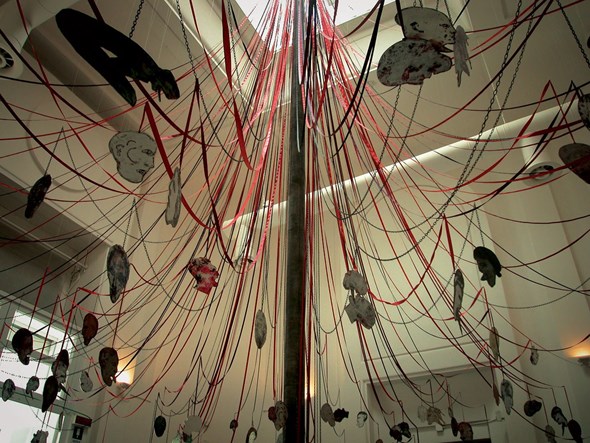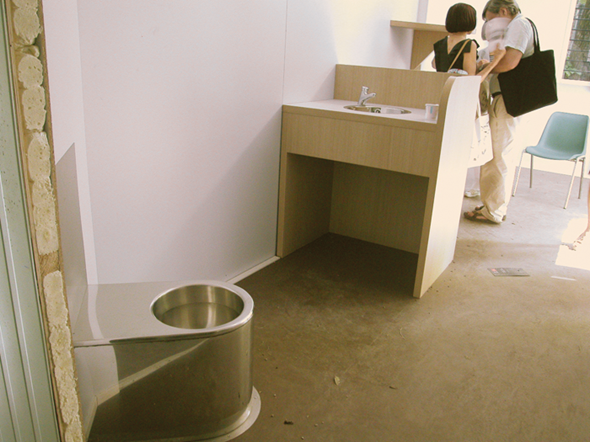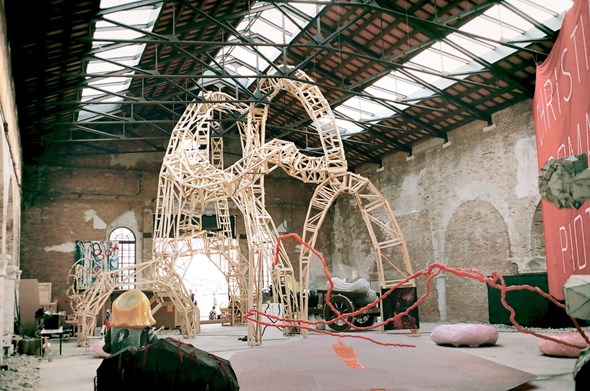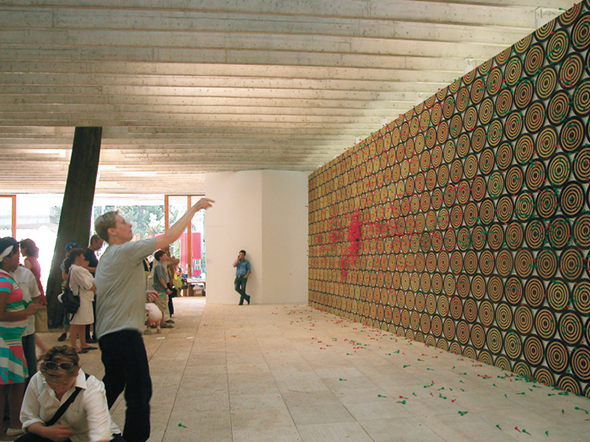
Yin and Yang
Francesco Stocchi on the 52nd Venice Biennale
The 52nd edition of the Venice Biennale reminds one of a time machine, yet one that is designed neither to forecast possible future artistic evolution, nor to study the »present tense« as the title suggests (unless the controls are set for a very personal time). Since the present is a transient state, the attempt to freeze it, especially in such an elaborated exhibition as this (it took more than three years to prepare), usually leaves one frantically trying to catch up. This unfailingly generates a glorification of the past.
The shows at both the Arsenale and the Giardini are certainly accomplished – after all, the director, Robert Storr, is of one of the most esteemed professional figures today. At first glance, everything works, and the two exhibitions have been carefully executed, from the macro to the micro, from the general critical setting to the use of suitable captions. A show which every professor should take his students to. A real academic manual. Storr has rightfully avoided any polemic and spectacle, but to such an extent that everything seems too safe, too protected, as if in a state of limbo. The problem is that, in the way it has been conceived, this Biennale could easily have taken place 10 years ago, or in 5 years time, without any substantial difference. Sadly, the rhythms imposed by our time do not allow such a lack of urgency.
Every Venice Biennale seems to raise the question about its role and every appointed director is exposed to the beloved seasonal practice of being criticized, just like any national soccer team coach during the World Cup. The current exhibition resides on the other side of the spectrum to Bonami’s edition in 2003. Bonami tried to empathize a state of possible developments in that specific, turbulent time. Occasionally, he tragically failed and probably was the whole point of his conception, or at least part of it, was to configure this hypothesis. Answers came with time. If that edition seemed a massive, chaotic work-in-progress, Storr’s exhibition is more contained and polished, suggesting a Sunday morning walk through the vast corridors of an Ikea Store: nice forms, beautifully packed, every detail accurately checked and reproducible anytime and everywhere.
Due to its history and to a reiterated and remote charm, the Venice Biennial continuously catalyzes an increasing amount of attention. The present exhibition is the most visited one ever and features 76 national pavilions as well as countless side projects. Everybody has a new idea, a new purpose, or a new nightmare and lays claim to his right to participate. The off-site venues turn out to be the most appealing ones, platforms where a sense of the moment could be vividly expressed. In the Hamsterwheel show, for example, Franz West’s personal concept magnetizes a wider interest by conceiving a globally controlled anarchy. An effective way to represent a state of things belonging to the time in which we are living by means of forms, colors and feelings. The off-site projects’ success underlines the difference between the periphery and the center in such an agglomerated event and demonstrates the actually fatuous value of the term »official«.
The Giardini experience was like a clash between Yin and Yang, an opposition rarely seen so clearly, as if it were a case of one single country vs. the rest of the world. While Robert Storr explicitly tends towards the American model by using the Italian Pavilion to construct a personal, but impermeable, historical path (featuring a good number of American masters, including conceptualists and minimalists – notably far removed from Storr’s vision), the artists featured in the national pavilions (who are visibly there on their own account, not on that of the country they represent) offered, in disparate ways, an unusually coherent view. The ubiquity of destruction and death seems to be obligatory consequence of the current geopolitical situation. Personal highlights were the Romanian, Dutch and Nordic Pavilions. Another interesting aspect of coherence resides in the Arsenale, were the political situation prevails as the central theme, though it fails in relation to the exhibition title: Think with the Senses, Feel with the Mind: Art in the Present Tense. It is quite clear what this has to do with the works in the Arsenale (a theme better applied to the modernism that inhabits the Italian Pavilion), nor why the idea of an African Pavilion turned into the display of a (suspiciously) private collection, featuring artists like Basquiat, DJ Spooky, Jaar or Warhol, which have little to do with Africa, or at least more with Afro-America, which is not exactly the same thing …
During one of his numerous public conferences, Robert Storr was heard admitting: »Hard to do art in such an unquiet time«. Although hard times have usually generated fruitful fruits (so what would then be the best time to do art?), we could add how visibly hard it is to show art if we don’t favor this instability, or »inquietude« and take risks, considering the experiment and possible failure as aspects of an open, lively research. But if the membrane that wraps the concept is repellent, insensible to cold, heat and humidity, the result might be stifled by the elegance of forms and political correctness. Generally, the convention of resorting to younger artists is a practice that I have never found convincing, but such a blatant absence of it is even more troublesome.
Personally, I believe that the Biennale should not be seen as a glorious career accomplishment, a chance to display ones own history, but rather as an attempt to portray a personal vision applied to a specific moment. If the former doesn’t find any place except in individual biographies, the latter, if achieved, could open up matters of discussion that produce productive repercussions in time.
FRANCESCO STOCCHI is curator and writer and lives in Rome.




